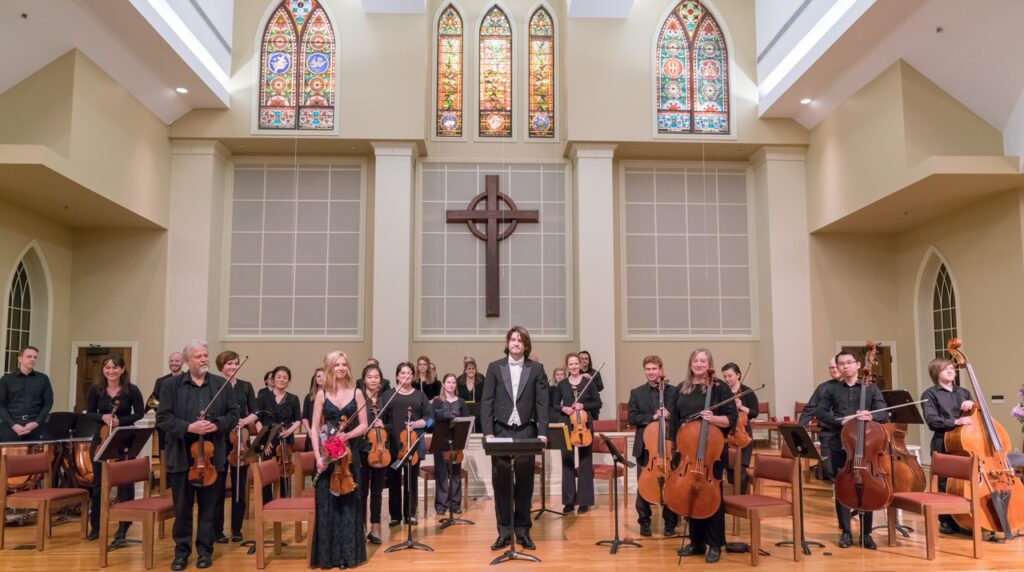The Lexington Chamber Orchestra (LCO) is premiering a new concert on the 2nd & 3rd of March, entitled European Postcards, promising a program that’s accessible to everyone—in both the musical and financial sense.
While classical music is often seen as dense or pretentious for the average listener, or as a pastime of the wealthy, the LCO program is full of pieces that promise clarity and a listening experience that anyone can enjoy. This accessibility is “incredibly important, for both the present and the future of classical music,” according to Eli Uttal-Veroff, the Managing Director of the LCO.
The program consists of three major pieces: the Haydn London Symphony, the Mendelssohn Italian Symphony, and the Vanhal Bass Concerto.
The Haydn London Symphony is one of the defining examples of the symphony as a genre—a genre that Haydn largely invented. While he wrote over a hundred symphonies in his life, the later works are by far the most-performed, and the London is one of Haydn’s most well-known works.
The London, like the other symphonies inspired by his trips to England (and adoration from the English public) is a diverting, witty work, containing hidden surprises, jokes, and tricks designed to keep an audience engaged—and always waiting for the next excitement. Because of this, Haydn is often thought of as a ‘family-friendly’ composer who can engage children in classical music.
The other symphony on the LCO program, the Felix Mendelssohn Italian Symphony, is characteristic of the Austrian composer’s style; he called it “the jolliest piece I have ever done.”
The Italian Symphony is a light, almost dancing bravura piece for the strings section of the orchestra, in which the winds and brass add color to the proceedings. You’ll be able to hear how Mendelssohn orchestrated—arranged which instruments would play which notes—with an eye towards simple and clear expressions of a few straightforward themes.
He maintains this delicate touch all throughout the Italian Symphony, culminating in a finale that’s easy to imagine as a joyous nighttime romp in the streets of Milan or Firenze, given interest by a mischievously swirling minor key. It’s the sort of music that kids and grandparents can enjoy together.
[aesop_video width=”content” align=”center” src=”youtube” id=”Mya0bUfjG5E” caption=”You can hear a performance of the Italian Symphony, performed here by the Berlin Philharmonic, and led by the austere conductor Herbert von Karajan.] ” disable_for_mobile=”off” loop=”off” autoplay=”off” controls=”on” viewstart=”on” viewend=”on” revealfx=”off” overlay_revealfx=”off”]
Played next to the Haydn London Symphony, you should be able to hear how Mendelssohn’s technique looks back at the balance and proportion of the Classical era as a model. In each case, the music should maintain a particular set of forms—ways of organizing the music so that the listener can easily understand what they’re hearing—and express a clear, but somewhat restrained and proper mood.
However, Mendelssohn couldn’t help but be influenced by the Romantic trends of his day, which emphasized passion, fury, and excitement beyond all proportion. As a result, a great deal of the fun of the Italian Symphony comes from the way that the music seems to bounce up and down against the bounds of the ‘proper’ Classical forms.

The relatively small size of the LCO, at ‘only’ 31 players, will likely help the listener understand this delicate, clear approach to emotive music, which can often otherwise get lost in the clamor of orchestras the size of battalions.
The remaining piece on the program is perhaps the most elusive. Unlike the Italian and London Symphonies, which are mainstays of the performance lists of most classical music groups, the Vanhal Bass Concerto is a lesser-known work by a composer that has been mostly left in the shadow of his contemporaries Haydn, Mozart, and eventually Beethoven.
However, Vanhal wrote some absolutely delightful music, including the Bass Concerto. The double bass is not often a solo instrument, as its normal range of pitches is too low to carry well in a large concert hall. Nevertheless, Vanhal deftly handles the upper ranges of the instrument to make the double sing, almost as though it’s a lyrical cello. In the hands of a talented bassist, the concerto is an experience both unexpected and tickling to the ear.
Overall, the concert, led by Jan Pellant, Music Director, and featuring David Murray as guest soloist, promises an upbeat and enjoyable introduction—perfect for a curious audience.
If you go: The March 2nd concert will be held at 7:30 p.m. at Tates Creek Presbyterian Church (3900 Rapid Run Drive, Lexington). The March 3rd matinee begins at 3:00 p.m. at the Lyric Theatre (300 E. Third St., Lexington). A brief pre-concert talk will be given by Maestro Pellant 45 minutes prior to each performance. All concerts are FREE (suggested donation $10-$20). For more information, visit www.lexingtonchamberorchestra.com




